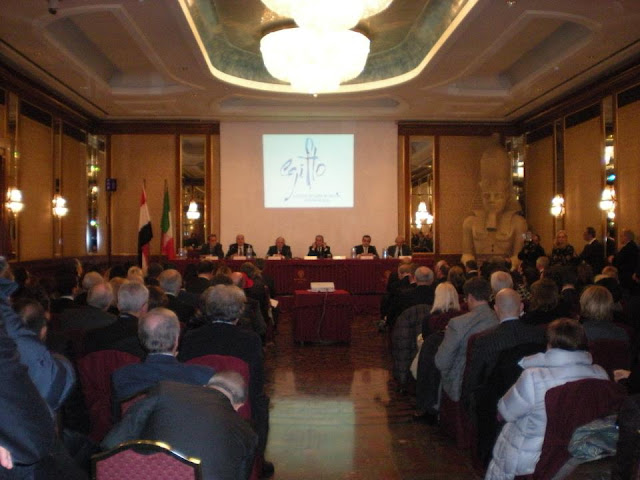APARNA KARTHIKEYAN
http://www.thehindu.com/life-and-style/travel/article2618294.eceHow Aparna Karthikeyan hurt her eye in Luxor — but not before it had captured some breathtaking sights presented by the ancient land against the rising sun“Please, can you show me your hip,” said the doctor, primly averting his eyes.
“But doctor,” I said, “it’s my left eye that’s injured.”
“Yes, I’m aware of that,” he said, in a clear, unaccented English, “but I need to give you this injection.” He brandished, from the depths of his bag, a large needle. First a prick in the eye and now this, I thought resignedly, and rolled over.
We were in Luxor, Egypt, staying in a sumptuously relaxing resort, the Nile hugging its backyard, slender palm-trees and white-sailed feluccas lending the rugged landscape an air of elegance, a touch of softness. After the heat and dust of Cairo, Luxor was a blessed relief, the deliciously cool air drifting across the Nile soothing the days, and chilling the nights. Having had our fill of the wonders of ancient Egypt and overwhelmed by its exhaustive history, we recklessly walked up to the travel desk and signed up for a hot-air balloon ride the next morning. And then spent the entire evening worrying if we had done the right thing…
Long before dawn cracked and cocks crowed, we piled into a bus to reach the pier to take a boat to the ballooning site. We hugged ourselves and rubbed hands to keep warm, until we saw the field with the balloons. It warmed us, mind, soul, everything.
Dotted all over the great, rolling sand-drifts, there sat tens of balloons, their multi-coloured canopies brilliantly lit by the roaring fire in their bellies, the people awaiting to alight bathed in a neon-orange after-glow. We were quickly ushered to our wicker basket (about the size of a small car) surrounded by some busy and several idle ground-staff, the whole set-up so reminiscent of India, that we couldn’t help smiling…
It was the last smile in a while though, until the balloon reached cruising altitude in any case, for it was quite frightening initially, the tongue of flame (the burner ably controlled by the pilot) flaring with sudden boom-booms to sweep more hot air into the nearly taut balloon. And when the ropes were finally released, we took off, dangling from the enormous red balloon, into a sky that was fast fading from a velvety purple to a blushing rose. The pilot, we quickly realised, was clearly experienced (though he teased us that this was his first flight too and asked us all to pray, hard) and extremely knowledgeable (then again, half the people we had met in the trip sounded like veteran Egyptologists!). He briskly pointed out monuments dotting the sands below and his witty quips, especially ‘that massive complex, over there, is the Hot-Chicken-Soup Temple’ loosened us up considerably. (‘Hot-Chicken-Soup’, we later learnt, was a corruption of the name ‘Hatshepsut’, one of Egypt’s celebrated woman Pharaohs).
The rising sun, in the meantime, decided to put up a spectacular show — for our sole pleasure, it almost felt — the fiery orange ball staining the horizon in bands of red, orange and pale butter-yellow. In a matter of minutes, the whole landscape visibly lightened up, the dull brown craggy hillocks suddenly glowing orange-gold, throwing long, silky shadows between their folds. By then we were ballooning-veterans, relaxed as we took pictures of the shifting images beneath us — one minute, a snapshot of the Nile, a thick blue ribbon snaking through the narrow verdant strip, many hot-air balloons leisurely floating over the jewel-green fields, looking very much like enormous, showy flowers. And the very next minute, we were drifting above the vast expanse of the desert, dotted alternatively by majestic ancient monuments and far more recent clusters of peasant houses.
All too soon (45 minutes, to be precise), it was over. We began our descent, skimming over other people’s terraces, peeping into their backyards, the humble peasant homes with their dark brown thatched roofs and white idli-domes, as frayed as anything from ancient Egypt. Cows breakfasted on dull-green scrubs, the washing hung limply from sagging lines, and in the distance, we watched fascinated as a small boy went about his business, on the back of a stout, galloping donkey.
The ground crew had already assembled and taken their positions, and when the basket neatly touched the golden desert sand, they took-over, helping the giddily happy passengers out. Collecting our ever-so-cheesy certificates, we took our places in the boat, and all it took was one terribly excited child wildly waving about the awfully sharp edged square of cardboard to ruin a perfectly glorious morning. The sharp edge pricked my left eye deep. I glared balefully with my one good eye, but it was no use — it needed all the ministrations of the kindly Egyptian physician the hotel recommended, and the massive doses of painkillers and steroids (which he insisted on injecting into my hip) to make the journey back home tolerable. A journey that has since remained memorable for loads of right reasons and one blindingly wrong one.



















